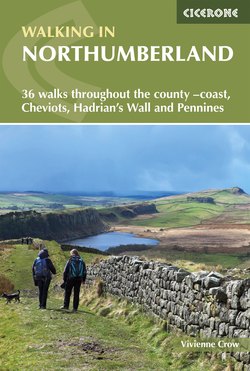Читать книгу Walking in Northumberland - Vivienne Crow - Страница 13
На сайте Литреса книга снята с продажи.
ОглавлениеWALK 2
Dunstanburgh Castle and Low Newton
| Start/finish | Craster Quarry pay-and-display car park, Craster (NU 256 197) |
| Distance | 12.4km (7¾ miles) |
| Total ascent | 165m (541ft) |
| Grade | 1 |
| Walking time | 3½hr |
| Terrain | Coastal paths, mostly grass but sometimes in dunes; sandy beach |
| Maps | OS Explorer 332 and 340; OS Landranger 75 and 81 |
| Transport | Buses 418 and X18 |
| Facilities | Craster Seafood Restaurant, Jolly Fisherman and Shoreline Café, Craster; public toilets and seasonal catering van in Craster Quarry car park; Ship Inn and public toilets in Low Newton; Dunstanburgh Castle Golf Course Clubhouse |
Looming spectre-like over the tiny harbour village of Craster, the spectacular cliff-top ruins of Dunstanburgh Castle form the focus of much of this walk. Taking the form of a double figure-of-eight, the route explores a narrow coastal margin north of the village as far as Low Newton-by-the-Sea, a pretty gathering of 18th-century fishermen’s cottages now owned by the National Trust. Here, at the half-way mark, you’ll also find the Ship Inn – a great spot to break the route before your return journey.
From the entrance to the car park, turn right along the road. Reaching the edge of Craster’s harbour, take the lane on the left – signposted Dunstanburgh Castle. Beyond the road-end gate, keep close to the sea as you walk along the close-cropped turf. Unfortunately, there isn’t a way round Dunstanburgh Castle on its seaward side, so you’ll have to head slightly inland as you near its fenced compound. The site is well worth visiting if you’re here during opening hours. Admission is free to members of both English Heritage and the National Trust.
Dunstanburgh Castle dominates the landscape around Craster
Occupying a windswept headland of Whin Sill rock, Dunstanburgh Castle is one of England’s most dramatically situated castles. Dating back to 1313, it was built by Earl Thomas of Lancaster, probably as a show of might in his opposition to King Edward II. The only time it saw military action was during the Wars of the Roses in the second half of the 15th century, when it was captured twice by Yorkist forces.
Having passed to the left of the castle mound, the path heads back towards the sea and through a gate.
The unusual rock formation jutting out into the North Sea here is known as the Greymare Rock. It consists of several layers of limestone warped by the heat and pressure caused by the same volcanic activity that created the Great Whin Sill.
Follow the trail along the seaward edge of the golf course, with Embleton Bay on the right.
There are several concrete pillboxes in Embleton Bay. Built in the early years of World War Two, these were fitted with loopholes through which weapons could be fired in the event of an attempted invasion.
Entering Embleton Bay
On reaching the sand dunes, you have a choice. You can drop on to the beach here and follow it for 2.3km to Low Newton, or to avoid getting feet wet on the crossing of Embleton Burn as it enters the sea, you can continue through the dunes for now. If choosing the latter option, the trail will later cross a footbridge. Ignore a second bridge on the right. Then, at a gap in the dunes, head on to the beach and walk north along the golden sand for 1.5km to Low Newton-by-the-sea.
The beach ends as you reach the buildings at Low Newton. Where the path comes in from the beach, cross the road and take the signposted coastal path along the narrow lane opposite. Just before the toilet block, follow the lane round to the left. The narrowing path passes to the left of Risemoor Cottage and then skirts the edge of Newton Pool Nature Reserve. At a sign announcing your return to the golf course, keep left along the clear path. The dunes here are dotted with wooden chalets built in the 1930s.
On reaching the bridge over Embleton Burn ignored earlier in the walk, turn right along a broad path through the golf course. About 130m beyond the bridge, turn left – signposted Craster. After crossing a footbridge, head right to continue along the course’s rough, western fringe. Continue past the gate at the Dunstan Steads road-end, aiming all the while for Dunstanburgh Castle again. You’ll encounter a golfers’ track to the left. Keep right here and then, on reaching the furthest green, leave the fence and head left to rejoin the trail along the coastal edge. Briefly retracing your steps from earlier, follow the path along the base of the castle rocks, but then keep right at two forks. The path crosses a bridge of sorts close to some gorse-covered rocks and makes its way back towards the sea. Go through the gate, keep to the coastal trail for about 80m and then, as the fence on the left ends, head up to the right on a faint line through the grass.
Beyond the stile in the top corner, keep straight ahead, walking with a fence on your left. At the bottom of a stony track, turn left through a kissing-gate. Walking south, keep close to the base of gorse-covered ridge known as The Heughs. Ignoring any trails up to the left, this path will eventually bring you out on the road into Craster. Cross over to re-enter the quarry car park.
